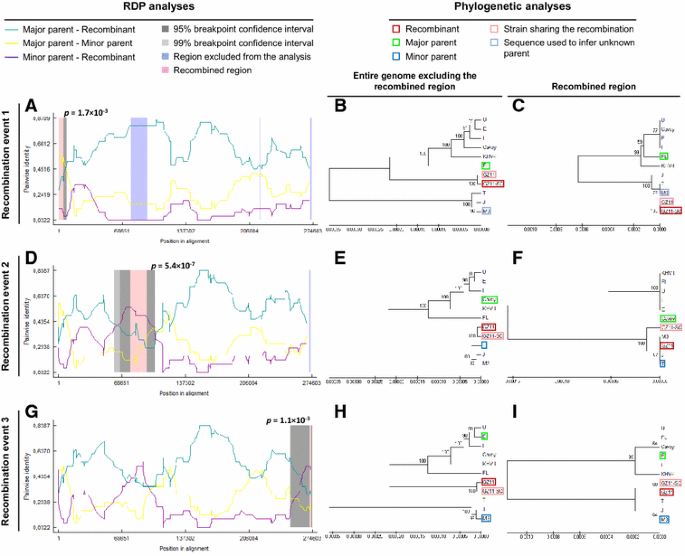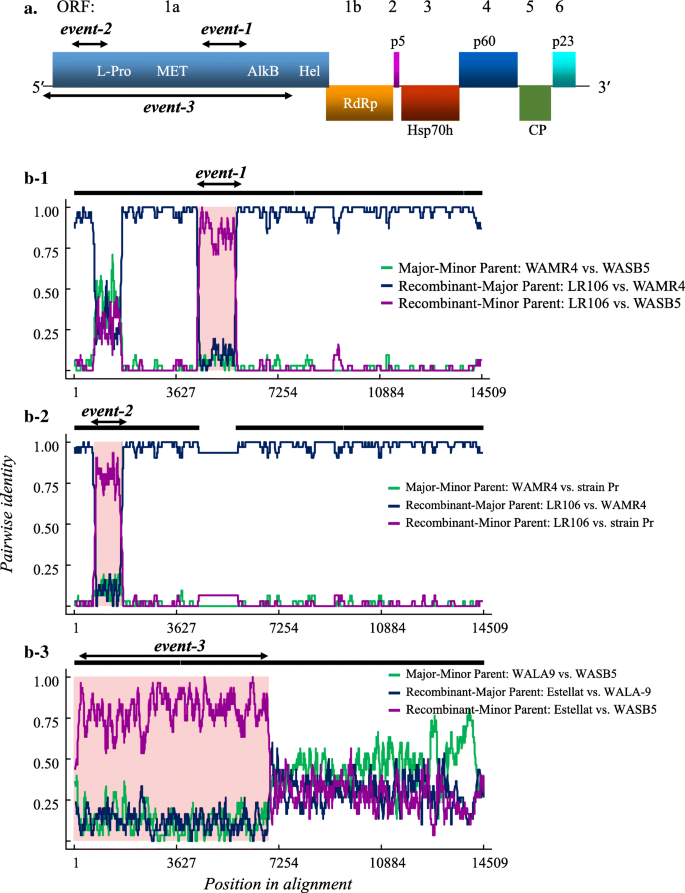


These URFs have a complex recombination pattern that cannot be determined accurately. We found that two samples related to CRF44_BF whereas the rest corresponded to new URFs (two URF_AD, one URF_BG that can constitute a new CRF resulting from subtype B and CRF24_BG, and two URF_cpx composed of A, G, K, H, and J subtypes). Next, we performed a phylogenetic analysis of each putative recombinant fragment to determine its relationships to previously described recombinant forms. We assessed the confidence of these inferences by likelihood mapping and phylogenetic placement with topology congruence tests. We obtained nearly full-genome sequences and used jpHMM and RDP4 to detect and characterize recombinant fragments. We aimed at fully characterizing these samples and performing a detailed analysis of the corresponding recombination events. Among the pol sequences derived from a large sample dataset from the Comunitat Valenciana (Spain), we identified nine putative recombinant samples. The routine analyses of antiretroviral resistance yield partial pol gene sequences that can be exploited for molecular epidemiology surveillance but also to study viral diversity and to detect potential recombinant samples. In fact, Circulating and Unique Recombinant Forms (CRFs and URFs) cause 23% of current infections. Recombination is one of the main processes shaping the evolution of HIV-1, with relevant consequences for its epidemiology. 4Centro de Investigación Biomédica en Red de Epidemiología y Salud Pública, Valencia, Spain.3Área de Genómica y Salud, Fundación para el Fomento de la Investigación Sanitaria y Biomédica de la Comunitat Valenciana, Valencia, Spain.2Unidad Mixta de Investigación Infección y Salud Pública, Fundación para el Fomento de la Investigación Sanitaria y Biomédica de la Comunitat Valenciana, Universitat de València, Valencia, Spain.1Instituto de Biología Integrativa de Sistemas, Consejo Superior de Investigaciones Científicas, Universitat de València, Valencia, Spain.Beatriz Beamud 1,2, María Alma Bracho 2,3,4 and Fernando González-Candelas 1,2,4*


 0 kommentar(er)
0 kommentar(er)
